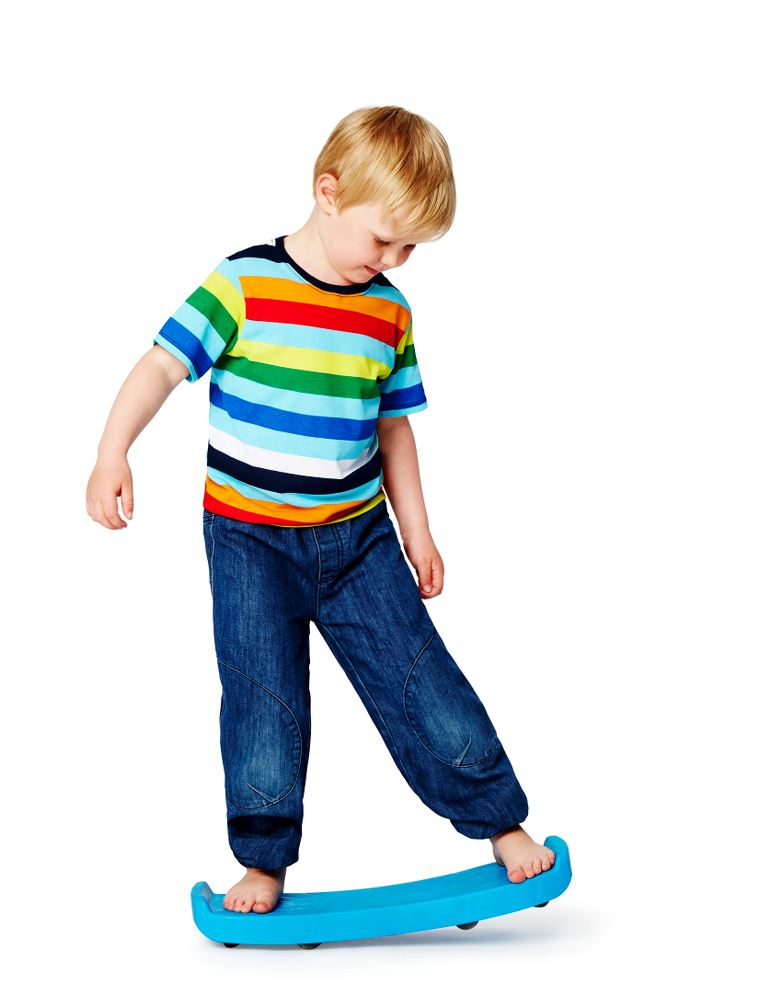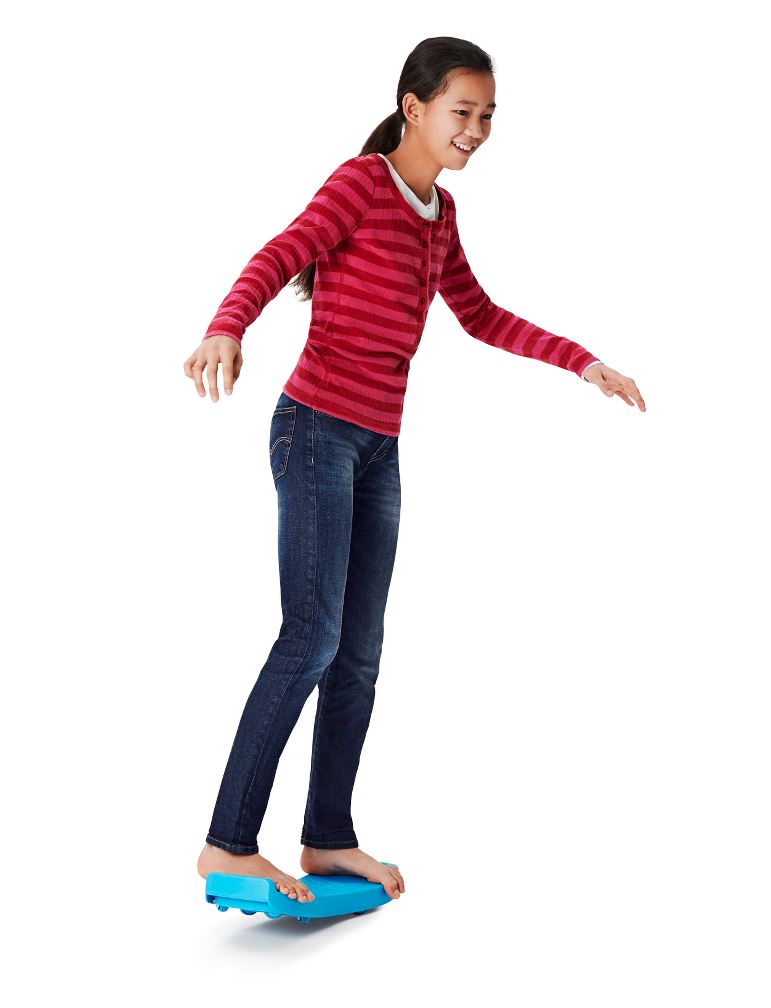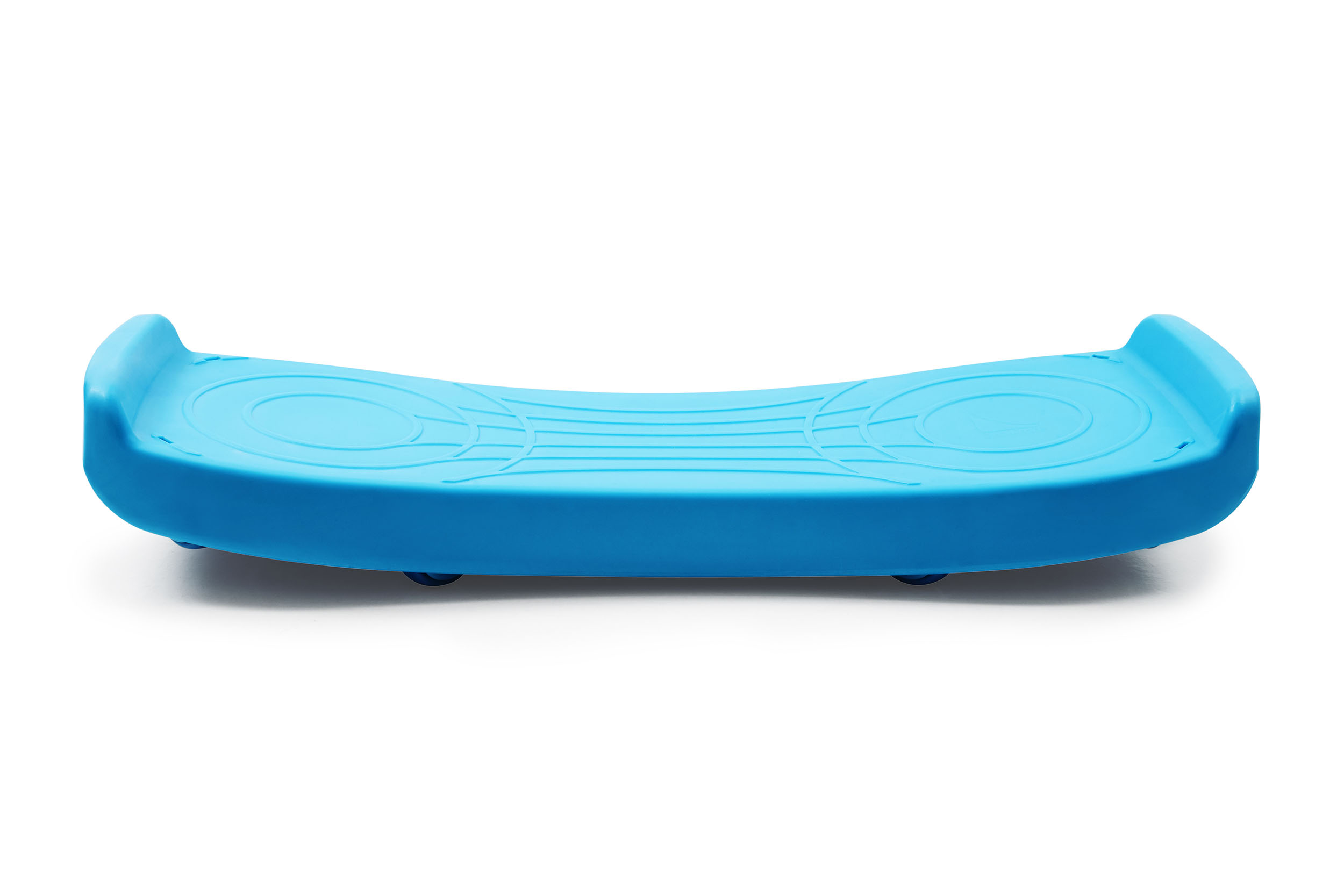
The supporting surface we balance on when standing has an area that corresponds to a circle drawn around our feet. When we stand with our feet together or on one foot, our supporting surface is smaller, and when we stand with our feet apart, the supporting surface is of course larger. The smaller the supporting surface, the more challenging it is for us to keep our balance.
If we wobble and find it difficult to balance, we may also find it difficult to shift all our weight over onto one leg.
The combination of these two challenges, i.e. a small supporting surface and immature balancing skills, explains why children learn to walk before they can run and when they learn to walk, they toddle, i.e. they walk with their legs wide apart and hesitantly.
When walking, a toddler always has one foot resting on the underlay, and he or she transfers his/her weight from one foot to the other relatively slowly. The child moves his/her feet so that both are in contact with the underlay at the same time, i.e. the child maintains an adequate supporting area. When a human being runs, only one foot rests on the underlay at any one time and, for a brief moment, we hover in the air without contact with the underlay. When running, our supporting area is smaller and weight transfer rapid.









